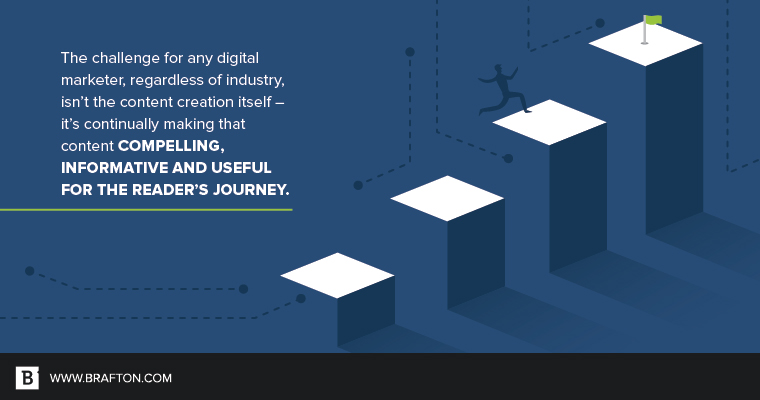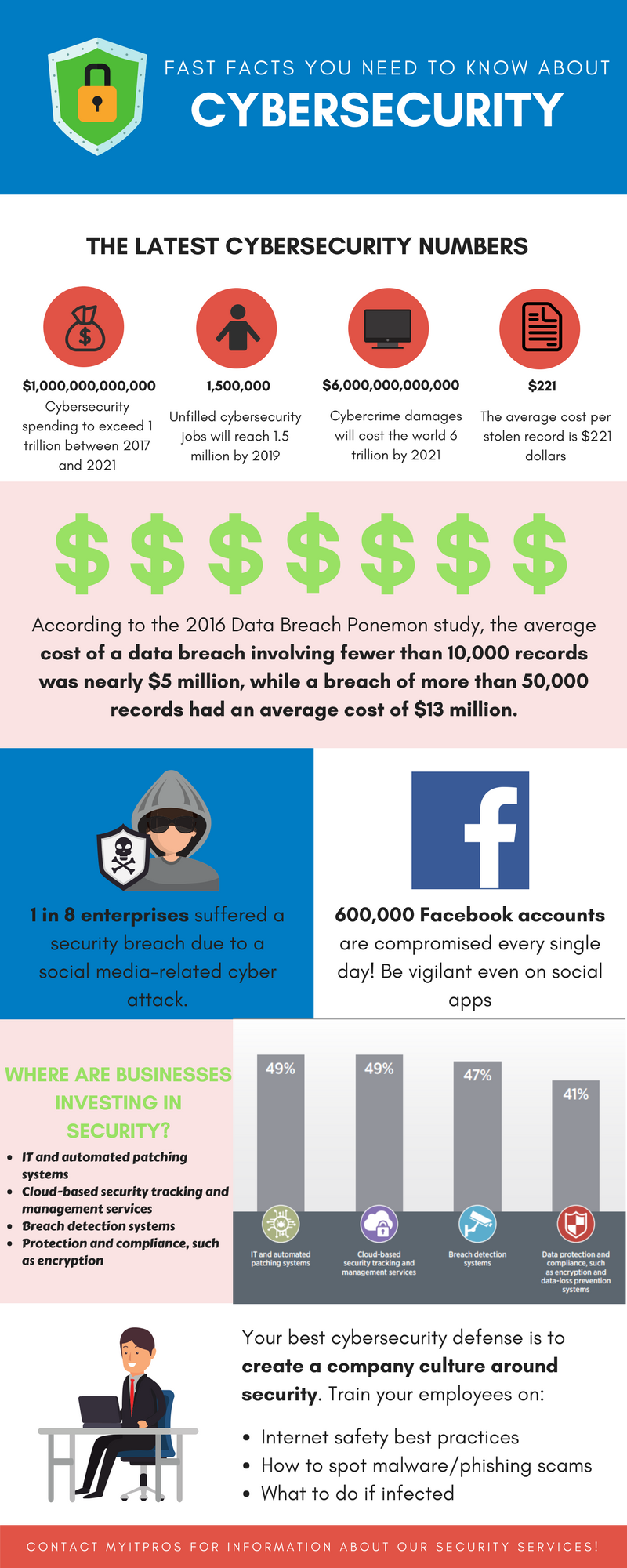When people hear I work in marketing, they automatically think of cool designs, public relations events, Snapchat and other trendy pursuits. When I tell them I do marketing for an information technology company, their reactions tend to be less animated.
Why? Because when people think of IT, they envision networks, computer viruses, servers and decidedly less “sexy” marketing. In short, they think, “Boring.”
To be fair, they’re not entirely wrong. Running a B2B marketing campaign for a small IT company means I probably won’t be overseeing an aesthetically pleasing Instagram account anytime soon. Those types of channels simply aren’t the avenues through which our audience wants to find answers to IT questions.
But that doesn’t mean our content marketing strategy won’t be clever, interesting or extremely valuable. After all, I truly believe content is only as boring as you let it be. The challenge for any digital marketer, regardless of industry, isn’t the content creation itself – it’s continually making that content compelling, informative and useful for the reader’s journey.
Those of us marketing in the IT industry typically run up against the following questions:
- How do you create content for such a diverse category that speaks to specific people?
- How do you strike the right balance of “techie” information versus broader information?
- How do you make “dry” topics interesting?
I’ve found I’m best able to answer these questions when I keep four main principles in mind:

1. Define your audience – and be specific!
Before you can even think about content, you need to have a firm grasp on who exactly you’re talking to. If you’re creating marketing campaigns for a technology company, a real estate business or a law firm, these enterprises’ corresponding industries are hugely broad.
For instance, MyITpros is in the technology industry – a sprawling, wide-ranging sector. However, we’re a managed services provider that performs a very defined service – IT support and planning – to a niche group. That means our audience won’t be composed of people looking for the latest technical specs on military AI intelligence, for instance. Rather, it will be composed of the same people we sell to: small- to medium-sized businesses in the central Texas area that use technology and are looking for ongoing support and consulting. Defining these demographics is important because they lead you into using the next audience tool – buyer personas.
Buyer personas are a common tool in the content marketing field, and for good reason. They allow you to hone in on specific members of your audience and flesh out their characteristics, such as knowledge level, pain points and goals.
At MyITpros, we use four main personas to represent the people at small businesses to whom we typically talk during the sales process, including CEOs, CFOs, office managers and in-house IT staff, and we’ve weighted these personas so we know how much content to distribute to each.
For example, we primarily work with business owners/CEOs, so we make sure to address that persona the most when creating our calendars (be sure to talk to members of your sales team during this process – they are invaluable!). Having personas also allows you to address the same topics more than once by speaking to them from a different person’s perspective, thereby giving more life to your content calendar.
2. Remember your mission
At MyITpros, our mission is to help and empower small businesses, and our content strategy is designed to fit that mission statement. We aren’t trying to give the most detailed tech specifications on the latest VR product, and that’s OK.
Our mission guides our content principles: We want to help people make informed IT decisions, not tell them what to choose or how to choose it. By coupling this approach with our defined personas – typically small-business employees with a limited IT scope – we can identify the level of tech speak we should use to ensure our content stays relevant to the audience.
That doesn’t mean we don’t get technical with our content, but we aren’t going to list off a bunch of server specifications just because we can. Rather, we strive to only get as technical as we need to in order to inform our audience.
For example, our technical staff will do product or software reviews in which we can get more technical than in some of our general pieces, but these reviews are written from a pros and cons angle to remain accessible to less tech-savvy audience members. For those technically inclined business owners who do want to know what storage vendor we leverage, we’ll do vendor spotlights to speak to that need.
3. Diversify your content types
Blogs, blogs and more blogs. The blog is the cornerstone of my content for MyITpros, but a holistic content strategy needs to be bigger than just written blog posts.
A lot of the concepts we tackle are better suited to formats aside from written posts. At MyITpros, I strive for a mix of:
- Blog posts.
- ebooks.
- Infographics.
- Videos.
- And more!
When creating your content strategy and coming up with themes and topics, always keep the best method of delivery in mind.
For example, budgeting for IT is one of our themes because as an MSP, price is always a topic of discussion with our audience (and we have a CFO persona). It’s hard to condense budgeting principles into a blog post, as there’s just too much information to cover, so we created an ebook that provides an overview of all the steps and then wrote individualized blog posts that pull from the ebook to provide easily digestible bites of information.
Similarly, when discussing the hot-button topic of security, there are a lot of facts to rattle off – whether these be the latest ransomware stats or tips on password protection. A lot of times, I will choose to create simple infographics to illustrate these facts, thereby making the information more engaging to read than a written list (additionally, we’re in a visual age – pictures work!)

Creating content relevant to your industry and audience is great, but to really move the needle on your campaigns, you have to go further.
Don’t be afraid to take risks with your content, as this will keep your audience interested and coming back to see what you create next. Next time you’re talking about user education related to ransomware, use a quiz format to see how security-savvy someone is!
4. Track, analyze and report!
I consider myself a creative type, so numbers aren’t my favorite thing. That said, to keep your strategy evolving and to know when you’re doing the right things, you must keep track of how your content is performing.
Hubspot is my marketing automation platform of choice, and features a reporting section that gives insight on page views, conversions, website traffic, email stats, etc. I combine this with Google Analytics and a heat map software called Lucky Orange to create a complete picture of where members of my audience are going and what they are doing on our site.
When I started at MyITpros, cloud computing was a big topic of conversation, and therefore it was also one of our main content themes. But after three quarters, I noticed content around the cloud was consistently low-performing. As a result, I deprioritized that theme when creating the strategy for the next quarter and into the next year, instead allowing more room for topics that were performing well (specifically, security and budgeting assets).
Trends are your friend, and you need to have consistent, repeating data to identify these and make better marketing decisions. Remember those risks I talked about before? Analyzing performance will help you see which ones paid off – you’ll sometimes be surprised at what takes off and what flops!
Your strategy should never be fixed, as it’s always an evolving entity. But don’t just throw spaghetti at the wall (at least, not always). Rather, use data to help you make the right decisions for your audience and to justify marketing costs.
Creating content for the IT industry may not be the hippest niche, but the challenge of finding the right audience and maintaining a balance between interesting and informative is a puzzle I come into work every day ready to solve!
Your content needs to speak to and problem-solve for your defined audience in a language it understands, and it’s important to deliver that message in diverse ways to ensure a strategy that positions your company as an authoritative thought leader.




